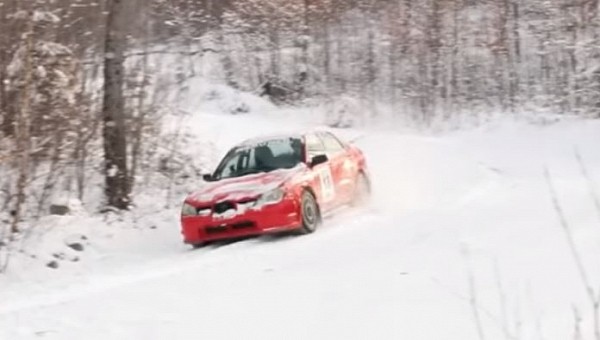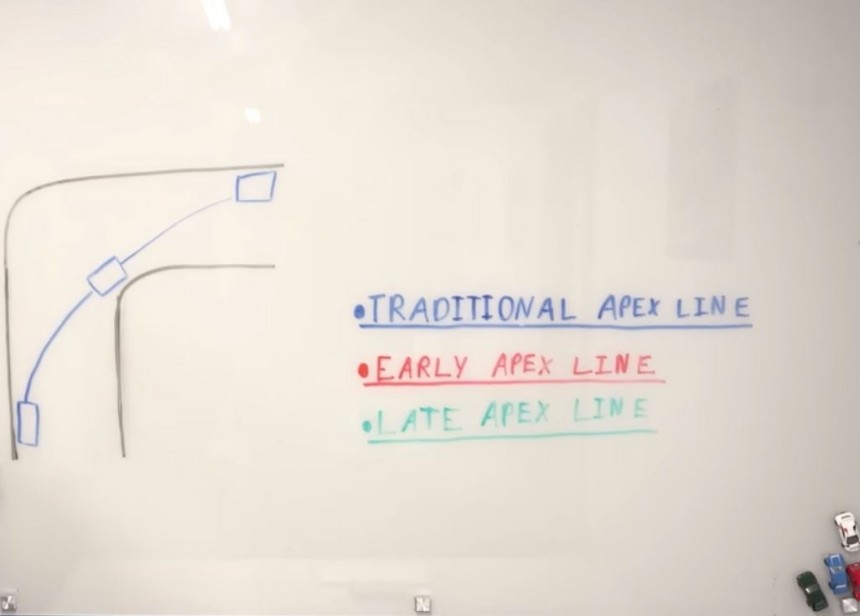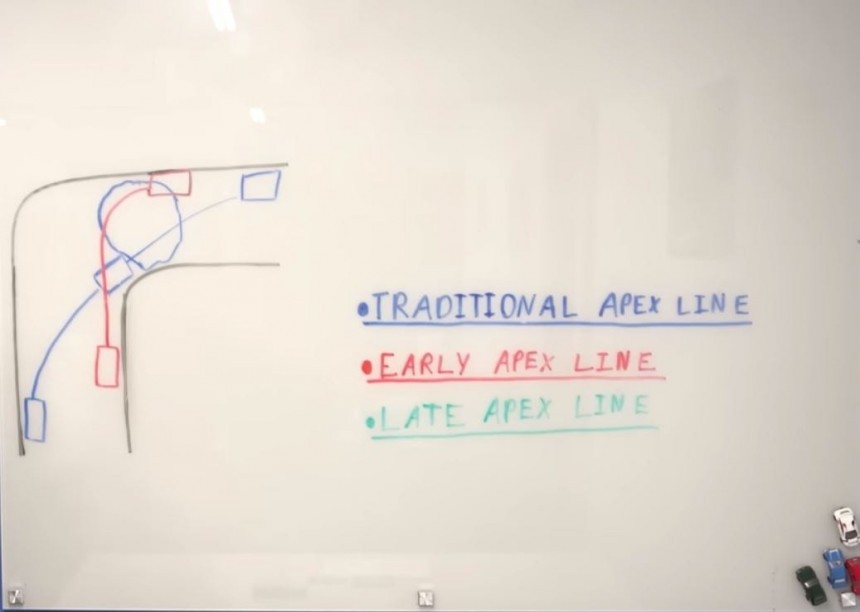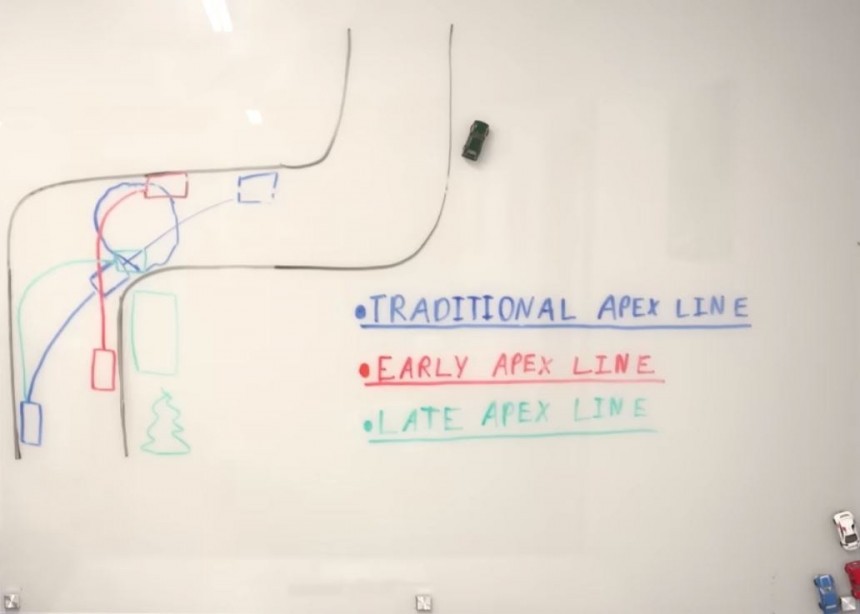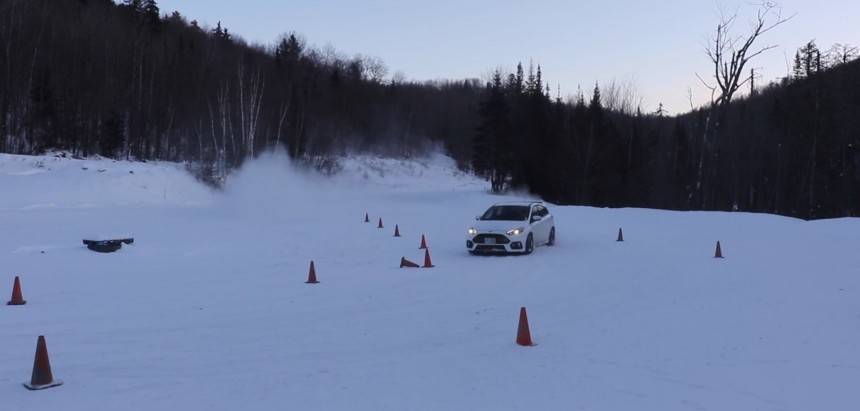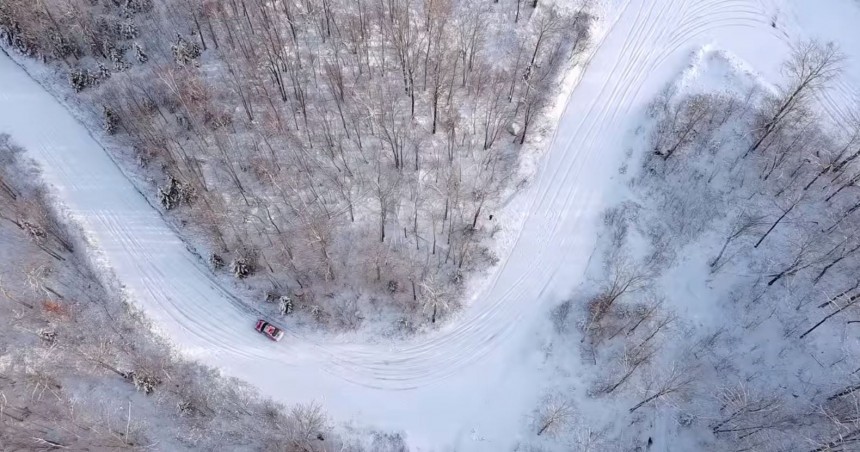Whenever we are watching a race on TV or a live broadcast on the internet, we will hear commentators speak about the apex. In some cases, you will also hear them mention terms like a late apex or an early apex. While some race fans have already figured it out, some may still have a few doubts as to what that is, what it is used for, and why a driver would veer away from the ideal racing line.
Fortunately for us, we live in an age where you can find most of the world's knowledge at your fingertips. Well, in theory, at least, you still need to know where to look and be able to discern if the information you are reading is correct, complete, and the right answer to what you were looking for.
Case in point, what is the apex, and what does it do with the racing line? Well, the racing line is meant to be the fastest way around a racetrack or a specific route. Since reality does not always involve a perfectly flat track, with no banking and no other factors that may change things, the fastest way around a track, or around a corner, for that matter, may not be using the ideal racing line.
To provide a clear answer, you should know that the apex is a point on the inside edge of a corner where the vehicle is the closest to the middle of that corner. Usually, hitting the apex, as it is called, is an essential part of the racing line, at least the ideal racing line.
However, the apex is not a determined point in a corner per se, because it refers to the point where you stop to steer more into the corner, rather than a particular point that you can paint an X on and then name the apex of the corner.
As such, racers have gone ahead and determined that you can either do an early apex, a late apex, or a traditional apex (although that definition is not used in practice – most people just say the apex).
As the folks at Team O'Neill Rally School explain, there is never a benefit in making an early apex when entering a corner. It is, in fact, the worst way of approaching a corner, but also the most common reason some people crash out of a corner.
While the driver may say that the "vehicle wouldn't turn," or it did not corner correctly, or it "did not slow down enough," the real reason for the crash, in most cases – and we are generalizing here, is that the driver turned in too little at first, got too confident in the way that things were going, misjudged the situation, and found themselves unable to complete the turn. As Juha Kankkunen once said in a post-crash interview: "speed was ok, the corner was too tight."
Depending on the situation, when an early apex is done, some drivers even make the mistake of applying the throttle before entering the corner, while they have yet to pass by the traditional apex point or the late apex point.
If this situation takes place on a track and they screech their tires in a mad understeer, they will then accelerate even more, attempt to steer more, or both, and make things worse.
If you remember physics from school or at least geometry, you should know that if your vehicle's speed increases in a corner before an apex, the radius of the arc – which means your line, will get bigger. In other words, you are making a corner “longer” if you try to attack it with too much speed, and this will only take you so far.
This mistake is common among inexperienced drivers and beginner track enthusiasts, but it may also happen when you are in an event that has multiple cars on a track and yours has the inside line – you must then do your best to avoid “washing out” by exiting the turn too wide and hitting another car as you exit that corner.
The early apex may also happen to those used to arcade racing games as kids, where this strategy looked like it worked better than it does in the real world, and there were no consequences no matter what, so it stuck in their minds. Modern sim racing games will not reward such behavior.
It is also the one that appears to be the most cautious, as it gets you closer to the corner apparently faster than others, but it does so incorrectly.
With that cleared up, the early apex makes no sense on a track, on the open road, or on a rally stage. It involves putting physics against you, and you can never win against physics.
Unless there is a visible oil spill on the right trajectory or an obstacle that must be avoided at all costs, taking the earlier apex is not a wise strategy.
If you were forced to do so, you could still slow down sooner, accept the compromised corner, and try to make the most out of the situation with a clean exit going forward.
In the case of circuit racing, for the most part, you may see people going for the traditional racing line, with the occasional late apex taken by other drivers.
The conventional racing line makes the most sense if the route is not full of rubber from other vehicles and the track is damp, which should make everyone go for a late apex, instead.
Things will be different when several drivers want to tackle the same corner at the same time, as well as when they encounter a series of corners.
For extra dicey situations, the corners may have a decreasing radius, which means that the corner tightens as you move further along it, and there are even double apex ones, which look like a U-shape, and have the late apex as the best approach to the first part, as well as the late or traditional apex for the second half – if you are inspired enough to refrain from hitting the gas once you pass the first apex.
In rallying, most corners are approached with the late apex strategy, with a few situations where the conventional racing line will do, such as an increasing radius corner, which opens as you exit it. The hairpin is the best example of a late apex corner, as you must always “wait” for it to unfold before you start straightening the wheel and getting back on the power.
Now, remember, all of this makes sense on the track, but you can try it out while using a racing simulator, as well. We advise you to try new stuff out on the racing sim before ever attempting them in real life on a track day, with a bit of extra caution IRL, as there is no reset button in the real world.
If this all apex/late apex thing has gotten you worked up, please refrain from trying it on a public road, as you may endanger yourself and others while doing it. We suggest you learn more about it by going to a rally school.
Case in point, what is the apex, and what does it do with the racing line? Well, the racing line is meant to be the fastest way around a racetrack or a specific route. Since reality does not always involve a perfectly flat track, with no banking and no other factors that may change things, the fastest way around a track, or around a corner, for that matter, may not be using the ideal racing line.
To provide a clear answer, you should know that the apex is a point on the inside edge of a corner where the vehicle is the closest to the middle of that corner. Usually, hitting the apex, as it is called, is an essential part of the racing line, at least the ideal racing line.
However, the apex is not a determined point in a corner per se, because it refers to the point where you stop to steer more into the corner, rather than a particular point that you can paint an X on and then name the apex of the corner.
As the folks at Team O'Neill Rally School explain, there is never a benefit in making an early apex when entering a corner. It is, in fact, the worst way of approaching a corner, but also the most common reason some people crash out of a corner.
While the driver may say that the "vehicle wouldn't turn," or it did not corner correctly, or it "did not slow down enough," the real reason for the crash, in most cases – and we are generalizing here, is that the driver turned in too little at first, got too confident in the way that things were going, misjudged the situation, and found themselves unable to complete the turn. As Juha Kankkunen once said in a post-crash interview: "speed was ok, the corner was too tight."
Depending on the situation, when an early apex is done, some drivers even make the mistake of applying the throttle before entering the corner, while they have yet to pass by the traditional apex point or the late apex point.
If you remember physics from school or at least geometry, you should know that if your vehicle's speed increases in a corner before an apex, the radius of the arc – which means your line, will get bigger. In other words, you are making a corner “longer” if you try to attack it with too much speed, and this will only take you so far.
This mistake is common among inexperienced drivers and beginner track enthusiasts, but it may also happen when you are in an event that has multiple cars on a track and yours has the inside line – you must then do your best to avoid “washing out” by exiting the turn too wide and hitting another car as you exit that corner.
The early apex may also happen to those used to arcade racing games as kids, where this strategy looked like it worked better than it does in the real world, and there were no consequences no matter what, so it stuck in their minds. Modern sim racing games will not reward such behavior.
With that cleared up, the early apex makes no sense on a track, on the open road, or on a rally stage. It involves putting physics against you, and you can never win against physics.
Unless there is a visible oil spill on the right trajectory or an obstacle that must be avoided at all costs, taking the earlier apex is not a wise strategy.
If you were forced to do so, you could still slow down sooner, accept the compromised corner, and try to make the most out of the situation with a clean exit going forward.
The conventional racing line makes the most sense if the route is not full of rubber from other vehicles and the track is damp, which should make everyone go for a late apex, instead.
Things will be different when several drivers want to tackle the same corner at the same time, as well as when they encounter a series of corners.
For extra dicey situations, the corners may have a decreasing radius, which means that the corner tightens as you move further along it, and there are even double apex ones, which look like a U-shape, and have the late apex as the best approach to the first part, as well as the late or traditional apex for the second half – if you are inspired enough to refrain from hitting the gas once you pass the first apex.
Now, remember, all of this makes sense on the track, but you can try it out while using a racing simulator, as well. We advise you to try new stuff out on the racing sim before ever attempting them in real life on a track day, with a bit of extra caution IRL, as there is no reset button in the real world.
If this all apex/late apex thing has gotten you worked up, please refrain from trying it on a public road, as you may endanger yourself and others while doing it. We suggest you learn more about it by going to a rally school.
